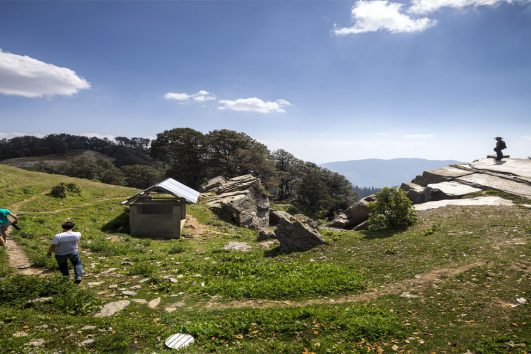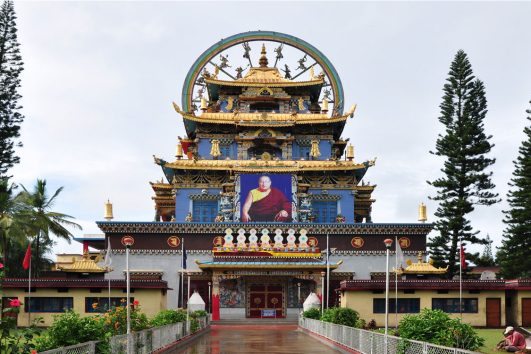The Thar Desert, also known as the Great Indian Desert, is a vast and intriguing region located in the northwestern part of the Indian subcontinent. Stretching across the border regions of India and Pakistan, the Thar Desert covers an extensive area of approximately 200,000 square kilometers (77,000 square miles). This arid expanse holds a unique place in the geography and
Geographic Features
Extent and Boundaries: The Thar Desert is bound by the Sutlej River in the west, the Aravalli Range in the southeast, and the Indus River in the northwest. It is the most densely populated desert in the world, despite its harsh conditions.
Climate and Weather Patterns: The desert is characterized by extreme temperatures, with scorching hot summers and chilly winters. Rainfall is scarce, typically occurring during the monsoon season, but even then, it is limited. This climatic harshness has shaped the region’s ecosystem and human lifestyle.
Topography and Landforms: The Thar Desert features a variety of landforms, including sand dunes, rocky terrain, salt flats, and flat plains. The shifting sand dunes, some of which reach heights of over 150 meters (500 feet), are a prominent feature of the landscape.
Flora and Fauna: Despite the challenging conditions, the Thar Desert supports a unique ecosystem. It is home to several plant species adapted to arid environments, such as acacia, cacti, and thorny shrubs. The desert also houses a range of wildlife, including the Indian gazelle (chinkara), desert fox, and various species of snakes.
Human Population and Culture
Indigenous Communities: The Thar Desert is inhabited by various indigenous communities, with the Rajputs being one of the prominent ethnic groups. These communities have developed distinct cultures, traditions, and languages influenced by their arid surroundings.
Population Density and Distribution: Despite its arid nature, the Thar Desert is home to a significant population. People are concentrated in villages and towns around oases and near the few sources of water available in the region.
Cultural Heritage and Traditions: The desert communities have preserved rich cultural traditions that include folk music, dance, art, and handicrafts. The vibrant colors and intricate designs of Rajasthani textiles and pottery are famous worldwide.
Economic Activities
Agriculture and Farming: Agriculture in the Thar Desert primarily relies on the cultivation of drought-resistant crops such as millet, pearl millet (bajra), and pulses. Innovative farming techniques, such as rainwater harvesting and terraced farming, are used to maximize crop yields.
Livestock and Pastoralism: Livestock rearing, particularly of camels, plays a vital role in the economy of the Thar Desert. Camels are used for transportation, and their milk and meat are essential food sources for desert communities.
Tourism: The Thar Desert’s unique landscape and cultural heritage attract tourists from around the world. Tourists often explore the desert on camel safaris, visit historic forts and palaces, and experience traditional Rajasthani hospitality.
Mineral Resources and Mining: The Thar Desert is rich in mineral resources, including gypsum, phosphates, and limestone. Mining operations have become increasingly important for the local economy.
Challenges and Environmental Concerns
Water Scarcity and Management: Water scarcity is a pressing issue in the Thar Desert. Sustainable water management, including the construction of check dams and rainwater harvesting systems, is essential for addressing this challenge.
Desertification: The desert is constantly encroaching upon arable land, leading to desertification. Sustainable land-use practices and afforestation efforts are essential to combat this process.
Human Impact on the Ecosystem: Overgrazing and unsustainable land use have put pressure on the fragile ecosystem of the Thar Desert, leading to soil erosion and biodiversity loss.
Conservation Efforts: Conservation organizations and local governments are working together to protect the unique biodiversity and cultural heritage of the Thar Desert through initiatives like protected areas and sustainable tourism practices.
Future Prospects
Sustainable Development Initiatives: Sustainable development projects aim to improve the living conditions of desert communities while conserving the fragile ecosystem. These initiatives focus on water resource management, renewable energy, and infrastructure development.
Climate Change Adaptation: With climate change posing a growing threat, the Thar Desert region is adapting to changing weather patterns and exploring renewable energy sources like solar power to meet its energy needs.
Economic Diversification: Efforts are underway to diversify the regional economy beyond traditional sectors like agriculture and mining, including promoting handicrafts and tourism-related businesses.
Research and Scientific Exploration: Ongoing research and scientific exploration of the Thar Desert’s unique ecology and history contribute to a deeper understanding of arid environments and their significance.






Tour Reviews
There are no reviews yet.
Leave a Review